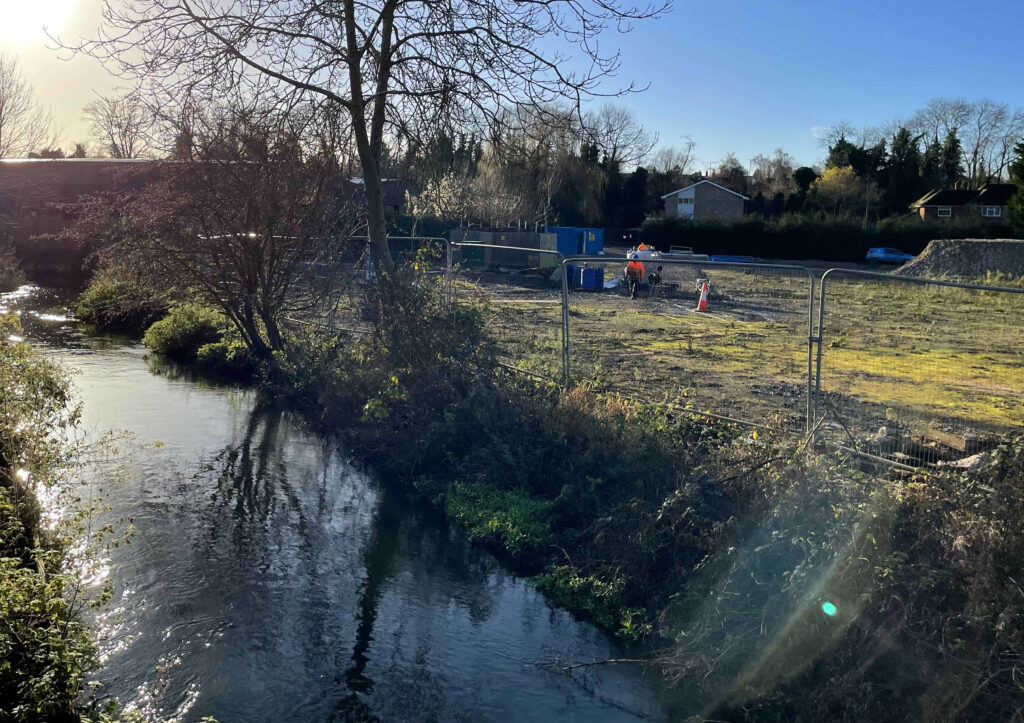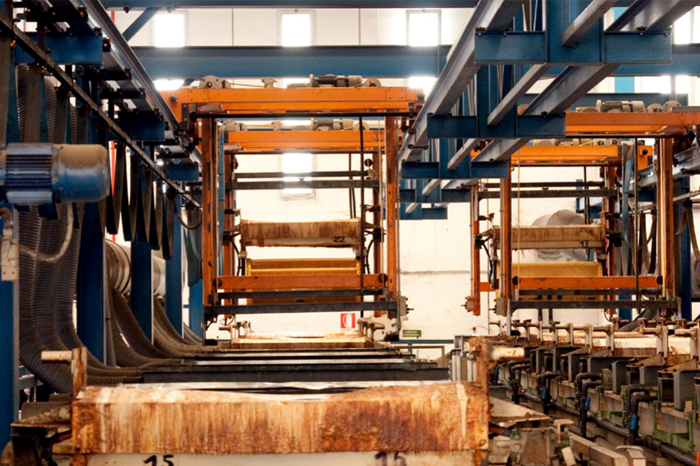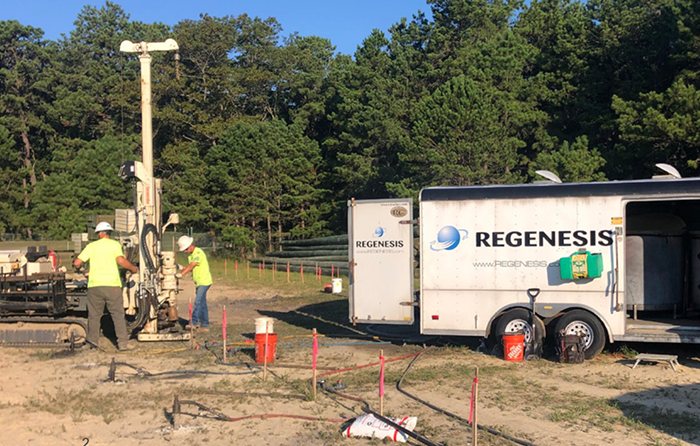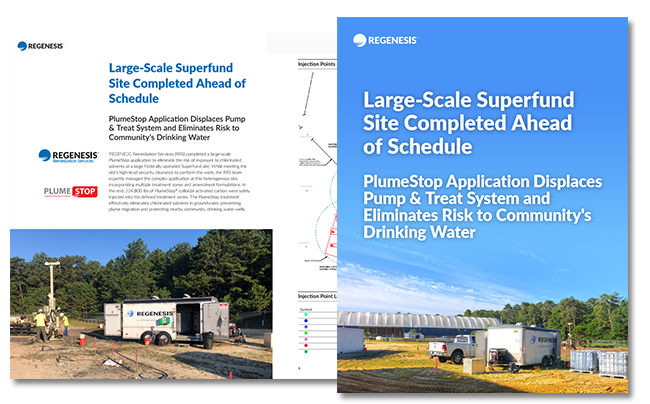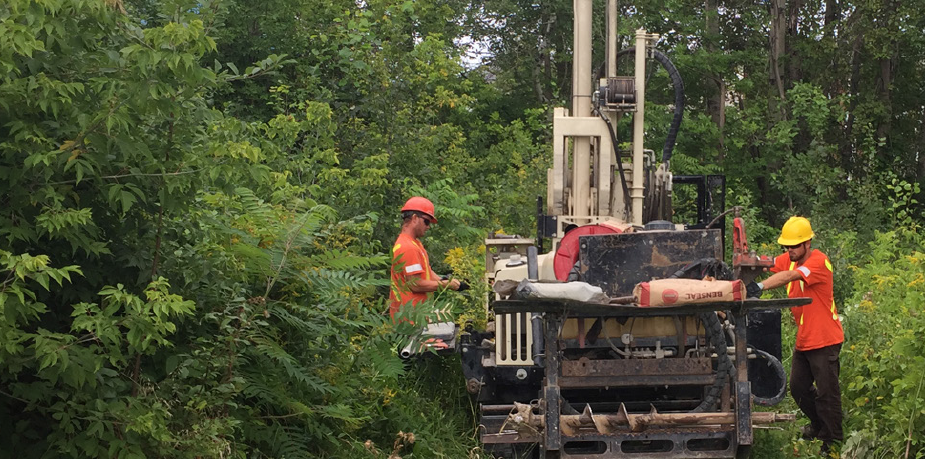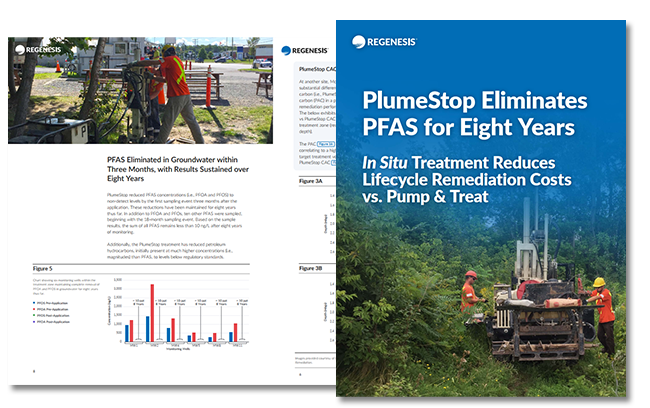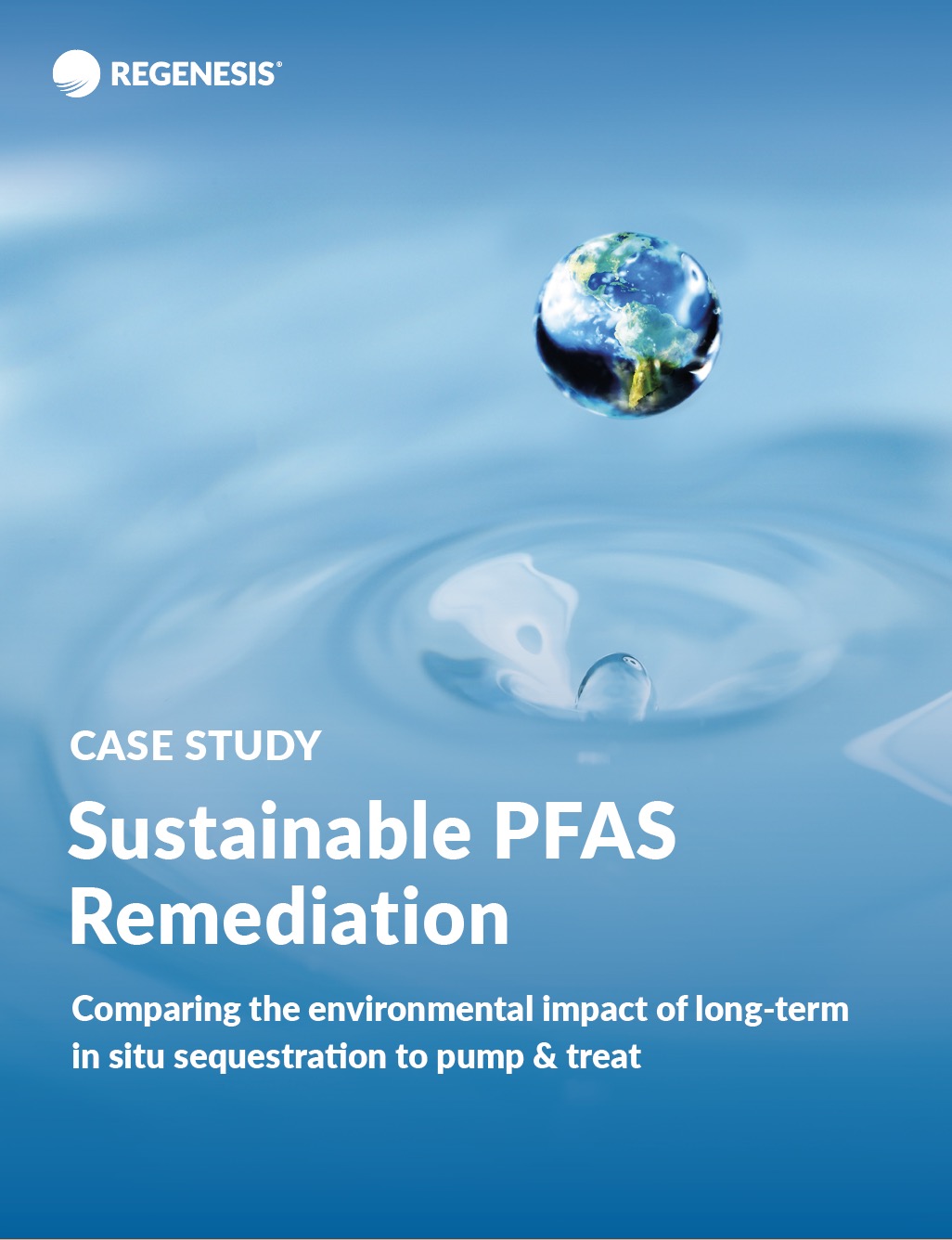Protection of a chalk stream using an injected permeable reactive barrier
Integrated remediation of petroleum hydrocarbons in soils and groundwater
At a brownfield redevelopment site in Hertfordshire, UK, petroleum hydrocarbon contamination originating from historic fuel storage tanks leaks, required remediation to protect the adjacent sensitive and protected chalk stream.
Working with the Environmental Contractor Rake Remediation, REGENESIS helped devise an efficient and integrated remediation strategy, that has been delivered in two phases.
Read the case study
1m 28s reading time
-
Watch the project video
-
Explore treatment options for petroleum hydrocarbons
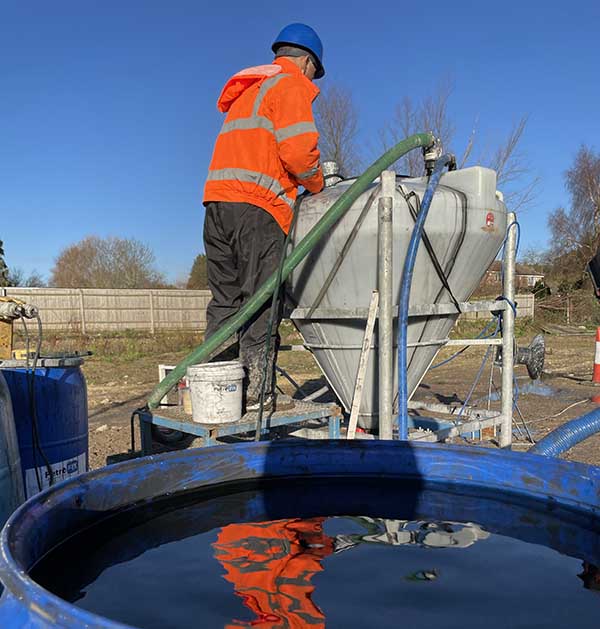
In Situ Treatment of Hexavalent Chromium Results in Site Closure
Case study highlights:
This case study focuses on the successful remediation of hexavalent chromium (Cr(VI)) contamination at a chrome plating facility in the Midwest of North America. Decades of ineffective pump & treat (P&T) operations led to the need for a cost-effective and rapid solution to achieve regulatory closure.
- Commodity ZVI and 3-D Microemulsion/CRS rapidly reduced Cr(VI) concentrations, achieving remarkable reductions within months.
- S-MicroZVI® and 3-D Microemulsion offered improved distribution and reactivity, addressing previous limitations in the remediation process.
- The use of S-MicroZVI® and 3-D Microemulsion led to a rapid 99% reduction in Cr(VI) concentrations, securing regulatory closure for a long-standing contamination case.
2m 55s reading time
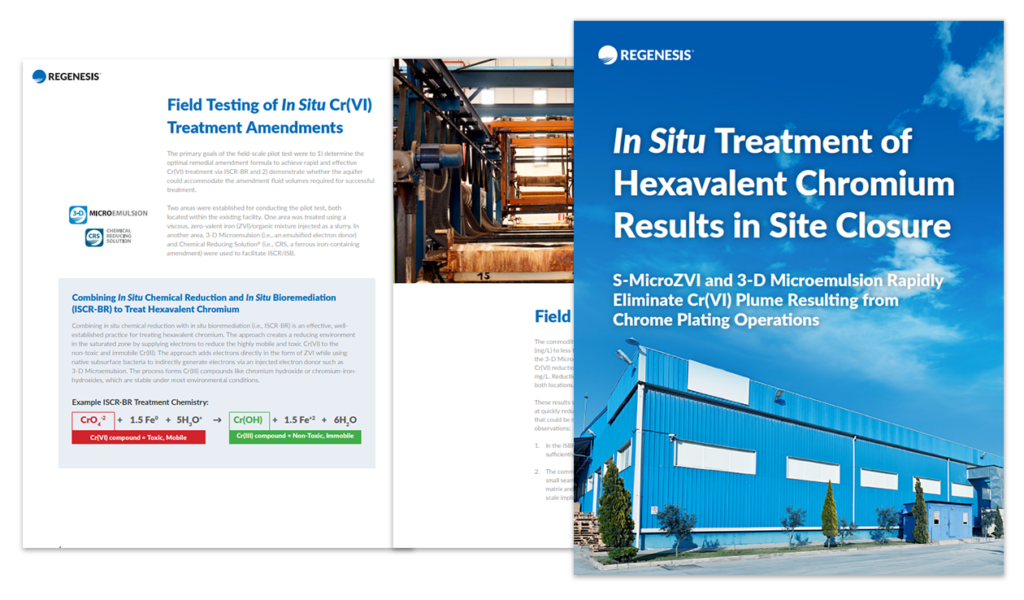
Remediation of BTEX and Chlorinated Solvents at Volvo Car Gent
Long-term monitoring shows success of in situ groundwater treatment at an active car manufacturer in Belgium
Background
Volvo Car Gent is a car manufacturing facility in the port district of Ghent, in the west of Belgium. Historic handling and storage of chemicals has led the soils and groundwater below the plant becoming contaminated with Petroleum Hydrocarbons (including BTEX) and Chlorinated Solvents.REGENESIS was asked to provide a solution to treat two plumes and prevent off-site migration, whilst keeping any disruptions to Volvo Car Gent operations to an absolute minimum. Artemis Milieu and REGENESIS worked closely together with client Volvo Car Gent, to deliver the most appropriate and effective remediation solution for the site.
Case Study Highlights
- The full-scale remediation addressed two plumes in two treatment areas with cost-effective in situ barrier and grid injections
- The combined treatment approach used ISCO, Sorption & Enhanced Biodegradation as well as Aerobic and Anaerobic Biostimulation to address the contamination.
- Challenges: operational plant and restricted access
- Client quote, remediation cost and long-term result graphs included
2m 32s reading time
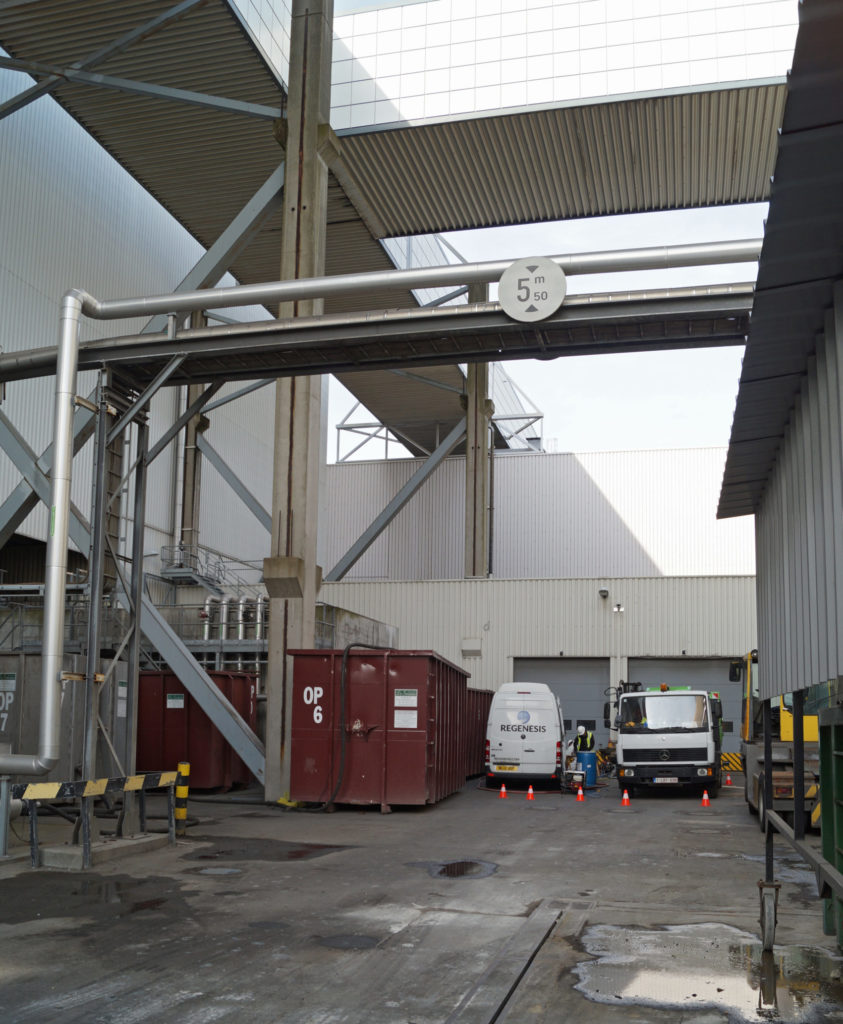
PlumeStop Treatment Allows for Shut Down of Pump & Treat System
Case study highlights:
- PlumeStop treatment prevents plume migration and protects nearby community drinking water wells
- This sustainable approach eliminates the massive carbon footprint created by outdated pump-and-treat approaches
- 224,800 lbs. of PlumeStop colloidal activated carbon were safely injected into the target treatment zones
This case study reviews a large federally operated Superfund site in the USA where REGENESIS Remediation Services (RRS) completed a large-scale PlumeStop application to eliminate the risk of exposure to chlorinated solvents. Amentum, a leading American governmental and commercial services contractor, is the responsible party’s contractor. Amentum has worked with the client at this site for years, providing oversight and management of their contracting partners. The project’s sensitive nature required an enhanced awareness of health, safety, and security issues and seamless coordination between RRS, Amentum, and their client.
PlumeStop Eliminates PFAS for 8 Years
This case study reviews the first known full-scale in situ PFAS treatment worldwide completed in 2016 at a manufacturing and former firefighting training site in Ontario, Canada, where aqueous film-forming foams (AFFF) were used.
A single application of PlumeStop resulted in a significant reduction of contaminant concentrations to below standards for 8+ years since the injection.
Case Study Highlights
- PlumeStop application reduces PFAS to non-detect within 3 months, maintaining for 8+ years thus far
- Remediation company IRSL collects critical treatment zone information to ensure successful application
- Sampling confirms PlumeStop fully distributed through the treatment zone
- Third-party modeling indicates that PlumeStop will halt PFAS migration out of the treatment zone for more than 60 years
Sustainable PFAS Remediation: Comparing the environmental impact of long-term in situ sequestration to pump & treat
This case study gives an overview of the findings of a sustainability comparison study carried out by Ramboll where REGENESIS in situ sequestration approach with PlumeStop® has been compared to ex situ treatment of PFAS contamination using Pump & Treat with GAC and Pump & Treat with Foam Fractionation.
PetroFix Remediation under an Operational Petrol Filling Station
Injectable permeable reactive barrier prevents offsite risk
Fuel losses at an operational petrol filling station (PFS) in the UK resulted in light non-aqueous phase liquid (LNAPL) seasonally building up under the forecourt. High levels of dissolved phase contamination was shown to be migrating beyond the site boundary and providing a potential off-site liability.
It was decided that voluntary remediation should be completed to prevent offsite advection and SLR Consulting concluded that the most sustainable remedial design for the site would be the installation of an injectable permeable reactive barrier (IPRB) using PetroFix® colloidal activated carbon. SLR partnered with REGENESIS to design and apply the solution.
2m 27s reading time
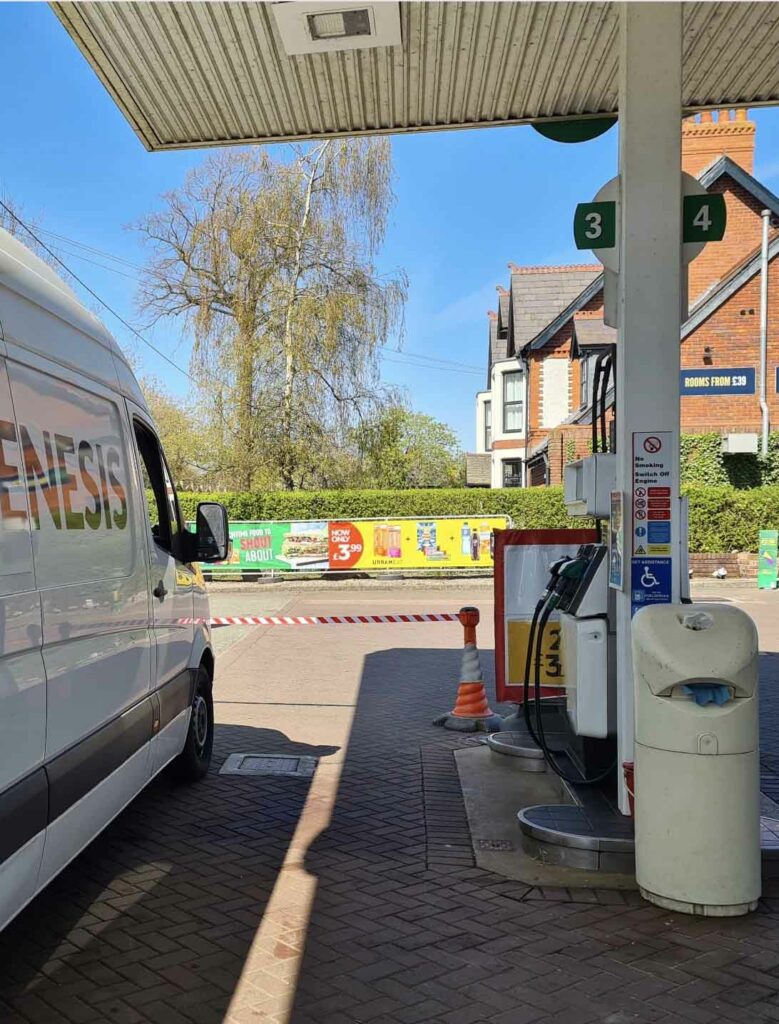
In Situ Chlorinated Solvent Treatment Protects Municipal Pumping Station
Remediation of a former dry cleaner site in Värnamo, Sweden
In situ remediation of groundwater impacted with high levels Tetrachloroethene (PCE) was completed at a former dry cleaning site, as the temporary installed groundwater recirculation system proved too expensive to run as a permanent solution. RGS Nordic carried out soil remediation using muliphase extraction and worked with REGENESIS to provide a remediation solution for the groundwater plume. Read the case study to find out about the remedial design, application and the results.
Highlights
- Example of a sustainable solution as no further operation cost or energy use required and it produced no waste for disposal
- Enhanced Reductive Dechlorination using a mix of REGENESIS electron donors delivers reduction in total chlorinated solvents of 99.6%
- 8 years of monitoring data shows no rebound in parent or daughter contaminant concentrations
- Downstream municipal pumping station is now protected from further contaminant ingress without the need for a protective pump & treat system
2m 39s reading time

Treatment Solution for Large TCE Plume Saves Client $380,000
Case study highlights
At a former manufacturing facility high levels of chlorinated solvents had been released into the groundwater, creating a large plume extending to the nearby river. A combined in situ biogeochemical reduction solution rapidly mitigated the threat to river:
-
Large TCE plume effectively treated using combined technology solution from REGENESIS, including PlumeStop® and S-MicroZVI®
-
Accurate mapping of CVOC flux zones using FluxTracers® saves millions in project cost
-
Safe and efficient installation meets time and budget requirements
6m 38s reading time
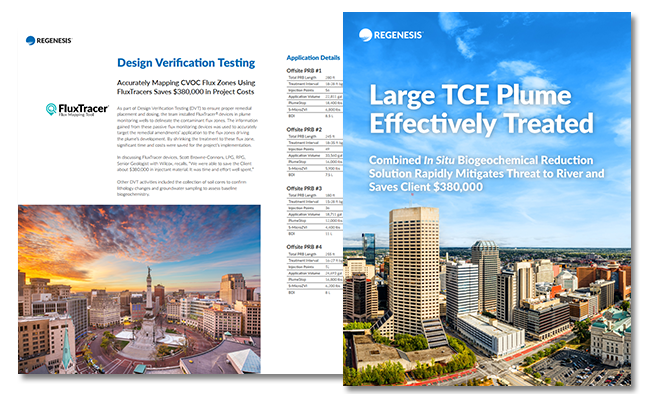
Combined Remedy Rapidly Achieves Targets to Address Chlorinated Solvent Impacts
Case study highlights
-
A multi‑faceted remedial solution mitigates CVOC contamination beneath an active business
-
Successful application overcomes challenging site conditions
-
Groundwater effectively treated using PlumeStop® and
S-MicroZVI®, expediting site closure
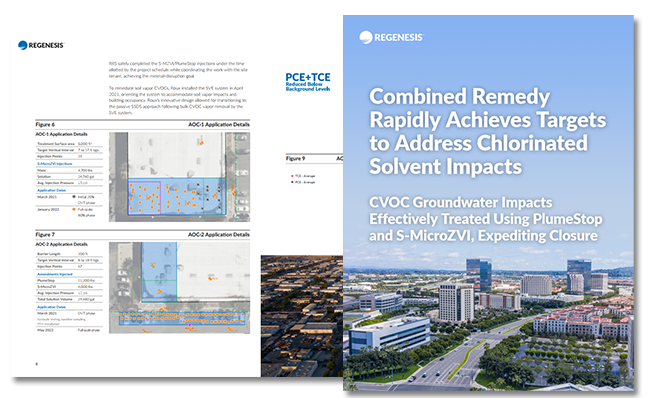

 Americas
Americas Europe
Europe Français
Français Deutsch
Deutsch Italiano
Italiano Español
Español